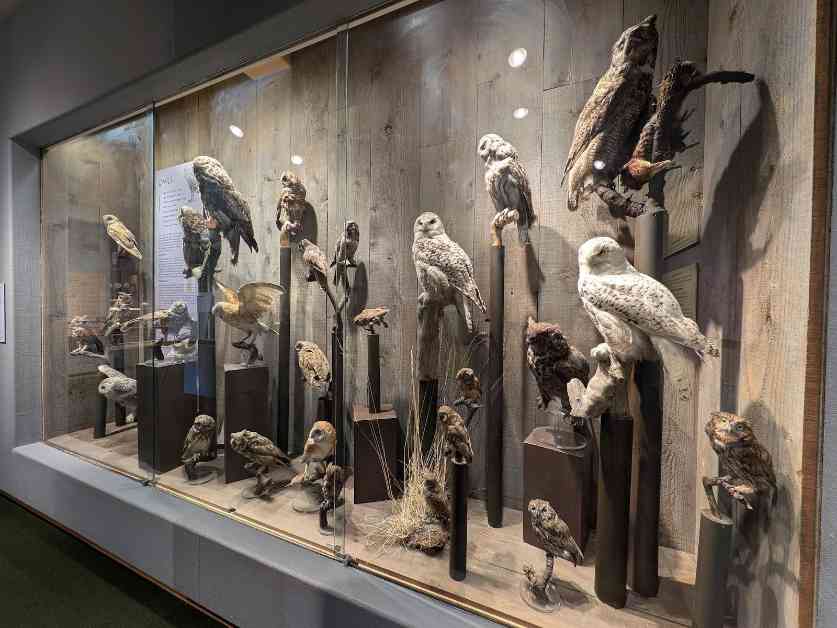The Hall of Birds at the Whatcom Museum in Bellingham, Washington, is a popular attraction for visitors. The taxidermy display, featuring nearly 500 specimens collected by naturalist John Edson, has been a centerpiece of the museum since its founding in 1941. Maria Coltharp, the museum’s director of collections, oversees the care of the historic taxidermy in the Hall of Birds, which includes a variety of birds such as trumpeter swans and snowy owls.
Caring for these taxidermy specimens, some of which are over 100 years old, requires constant maintenance to prevent pests, dusting, specialized cleaning, and occasional restoration. However, the Whatcom Museum does not have a staff taxidermist, a trend that is common in many museums today. Instead, museums rely on outside contractors with the necessary artistic and scientific skills to maintain high-quality taxidermy collections.
The decline in staff taxidermists in museums is attributed to the fact that many institutions already have well-established collections and are not adding as many new pieces as they did in the past. During the late 19th and early 20th centuries, museums were actively building collections and sending out expeditions to collect rare animal specimens for taxidermy.
Today, finding qualified taxidermists who can perform museum-quality work is a challenge, especially for smaller institutions like the Whatcom Museum. The lack of in-house expertise has led to a disconnect between museums and independent taxidermists. The Covid-19 pandemic has also contributed to a decrease in museum staffing, making it even more challenging to find qualified individuals to care for taxidermy collections.
To address the need for expertise in caring for the Hall of Birds, the Whatcom Museum enlisted the help of Allis Markham, a taxidermist from Prey Taxidermy in Los Angeles. Markham and her colleagues conducted an assessment of the taxidermy specimens and provided guidance on maintenance and restoration. This collaboration helped empower Maria Coltharp, the museum’s director of collections, by providing her with the knowledge and support needed to care for the taxidermy collection effectively.
Maintaining taxidermy specimens in museums is crucial for creating a unique experience that connects visitors with nature. While taxidermy is gaining popularity as a hobby, working on museum pieces requires a specialized skill set that combines artistry and scientific knowledge. Museum taxidermists must be able to problem solve and create high-impact specimens that engage and educate museum visitors.
Overall, the collaboration between the Whatcom Museum and taxidermy experts like Allis Markham highlights the importance of preserving and caring for taxidermy collections in museums. By working together, museums can ensure that these unique displays continue to captivate and educate visitors for years to come.






